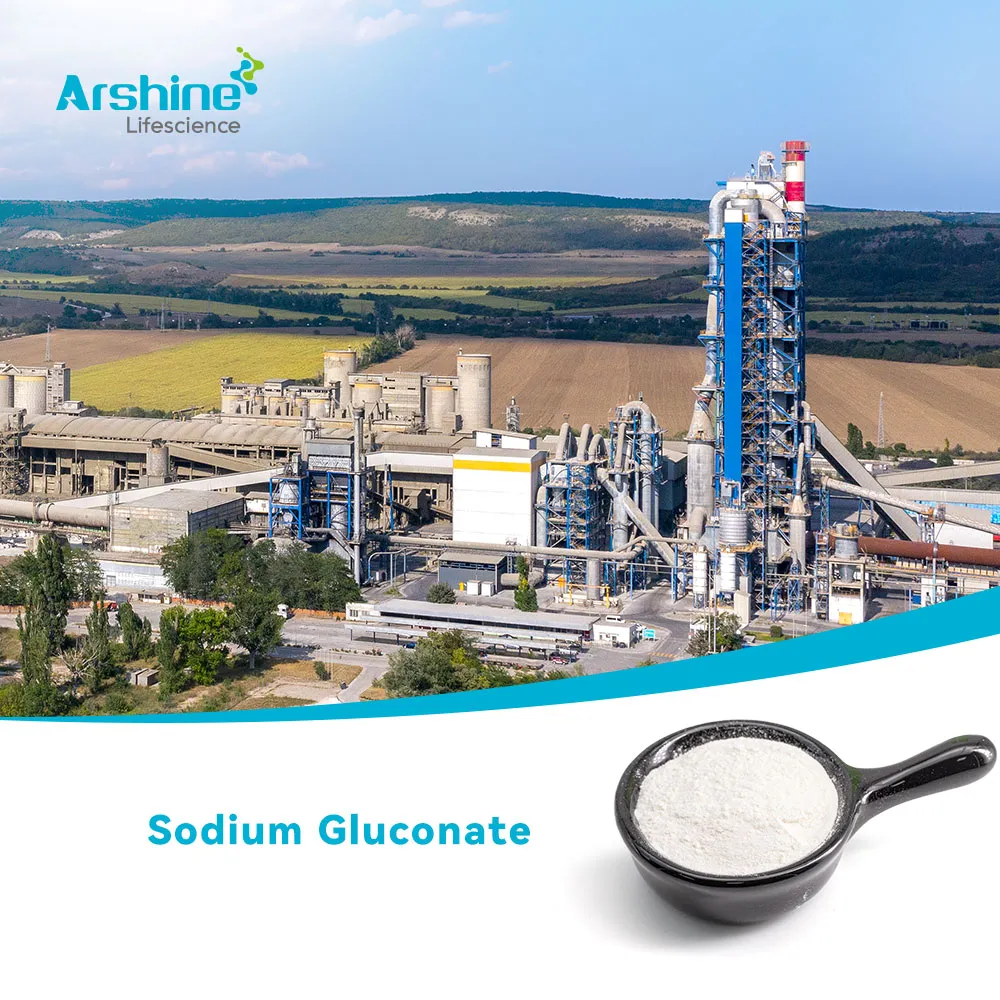

Sodium gluconate is an organic compound with the chemical formula C6H11NaO7, which finds extensive industrial applications. It serves as:
High-efficiency chelating agent in construction, textile printing/dyeing, metal surface treatment, and water treatment industries
Steel surface cleaning agent
Glass bottle cleaning agent
Aluminum anodizing colorant in electroplating
High-performance retarder and water reducer in the concrete industry
1.What is Sodium Gluconate?
Sodium gluconate is an organic compound with the chemical formula C6H11NaO7, which finds extensive industrial applications. It serves as:
High-efficiency chelating agent in construction, textile printing/dyeing, metal surface treatment, and water treatment industries
Steel surface cleaning agent
Glass bottle cleaning agent
Aluminum anodizing colorant in electroplating
High-performance retarder and water reducer in the concrete industry
2.How it Works?
Sodium gluconate is non-toxic. Both sodium gluconate present in water and its chelates with heavy metal ions can be rapidly and completely degraded through conventional biochemical treatment. During the degradation process, the released heavy metal ions can be removed either by precipitation or through adsorption onto the sludge formed during wastewater treatment.
3.Benefits and Uses
Concrete is a composite material composed of cement, aggregates, admixtures, and water. It is the most widely used human-made construction material globally.
Aggregates account for about 75% of concrete volume, but the most reactive component is the cement paste.
The properties and performance of concrete largely depend on the characteristics of the cement paste.
Admixtures provide beneficial effects such as:
Accelerating or retarding setting time
Introducing air bubbles (air entrainment)
Reducing water demand while improving workability
Enhancing plasticity
Multiple admixtures are often used together, as they can synergistically enhance performance in certain applications.
Sodium gluconate (C₆H₁₁NaO₇) serves two key functions in concrete:
Water reducer
Retarder
By incorporating sodium gluconate, the water-cement ratio (W/C) can be reduced, leading to:
Improved Workability
At a constant W/C ratio, sodium gluconate acts as a plasticizer, enhancing workability.
Below 0.1% dosage, workability improvement is proportional to the amount added.
Increased Strength
With cement content unchanged, water content can be reduced (lower W/C).
At 0.1% dosage, water demand decreases by 10%, improving strength.
Reduced Cement Content
Both water and cement can be proportionally reduced while maintaining the W/C ratio.
Sodium gluconate significantly delays concrete setting time:
At <0.15% dosage, the logarithm of the initial setting time is proportional to the dosage.
Doubling the dosage can extend setting time tenfold, allowing workability retention from hours to days without compromising strength.
Particularly beneficial in hot weather or when extended placement time is required.
Used in beverage, food, and brewing industries for cleaning:
Soda bottles, beer bottles, milk bottles, canned jars, soy sauce bottles, wine bottles, etc.
Traditional cleaners face issues such as:
Poor stain removal
Clogging of spray nozzles and pipelines
Ineffective removal of bottle labels and rust
Unsafe residues (e.g., phosphates)
Non-compliant wastewater discharge
Sodium gluconate-based cleaners solve these problems effectively.
(Large-scale tests in the 1980s at Shanghai Soda Factory and Shanghai Brewery confirmed its efficacy.)
Market potential remains untapped in many regions.
Widely used in:
Cooling water systems (petrochemical plants, power stations)
Low-pressure boilers
Internal combustion engine cooling systems
Unique Advantages:
Synergistic Effect
Enhances corrosion inhibition when combined with molybdenum, silicon, phosphorus, tungsten, or nitrite-based treatments.
Temperature-Stable Performance
Unlike conventional inhibitors (which lose efficiency at high temperatures), sodium gluconate’s corrosion inhibition improves with rising temperatures (e.g., 5%+ higher efficiency at 120°F vs. 77°F).
Strong Scale Inhibition
Excellent chelation of Ca²⁺, Mg²⁺, and Fe³⁺ across a wide pH range.
Eco-Friendly
Non-toxic and biodegradable, meeting strict wastewater discharge regulations.
Regulates acid-base balance in the human body, aiding nerve function recovery.
Approved as a safe food additive for pH adjustment.
Q:Does the company accept sample orders?
A:Yes, our company accepts sample orders.
Q:What is the minimum order quantity for the company?
A:We do not have a minimum order quantity requirement, we arrange according to the customer's needs.
Q:How to ensure the quality of goods?
A:We have a strict QC/QA management system and strict release procedures, and we will provide all procedures to customers before shipment according to their requirements.
Q:Can we see the product quality before the order is shipped?
A:Of course, we always provide a relative Batach (s) 'COA before shipping.
Q:How will you deliver the goods?
A:We will communicate with customers, adopt their suggestions, arrange the most suitable delivery method, and ensure mutual satisfaction.
Add: Block 14, No.100, Luyun Road, Changsha 410205, Hunan, China.
Tel: +86-731-82294958
Email: info@arshinechem.com
WhatsApp: 8618874001228